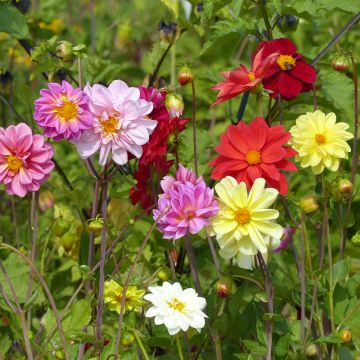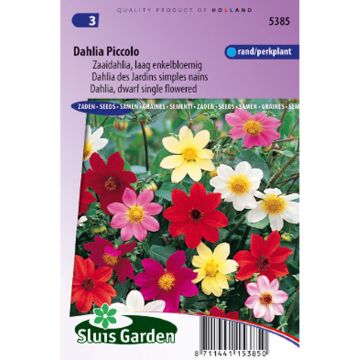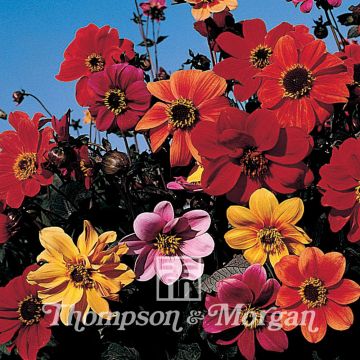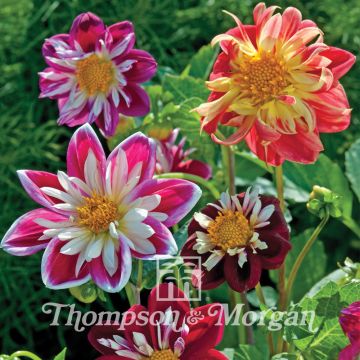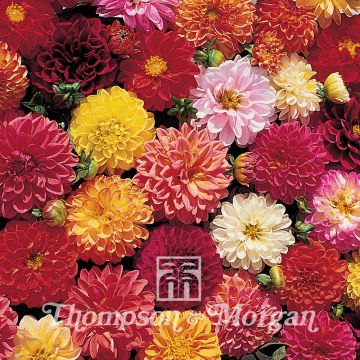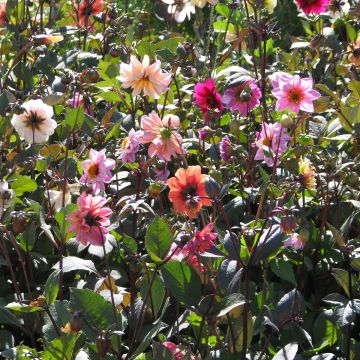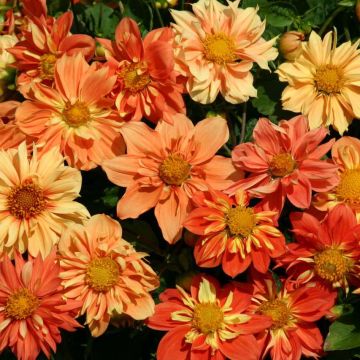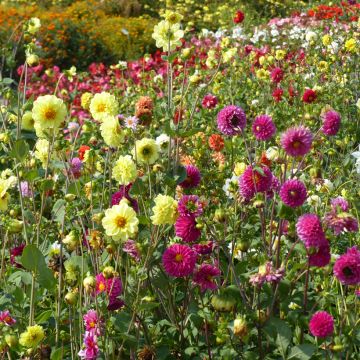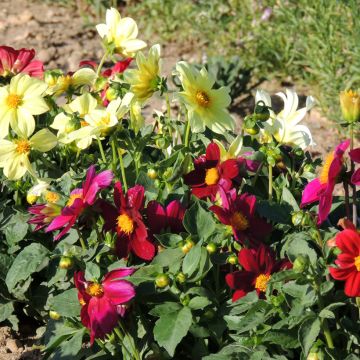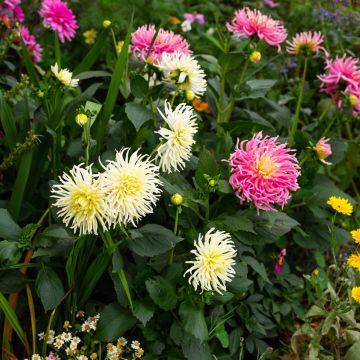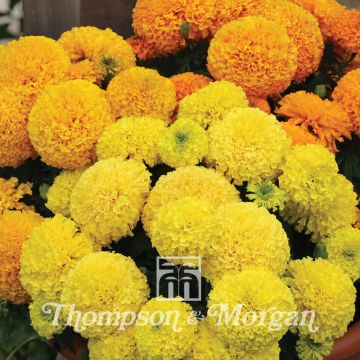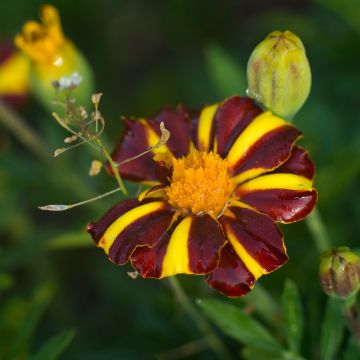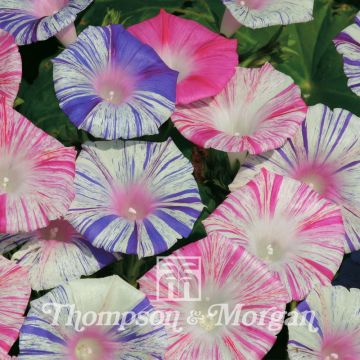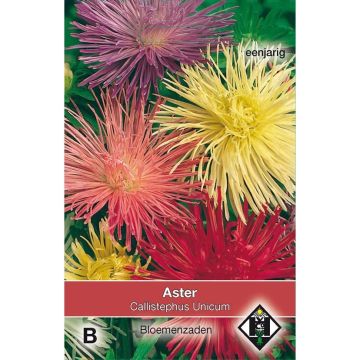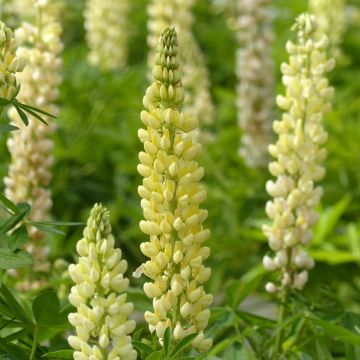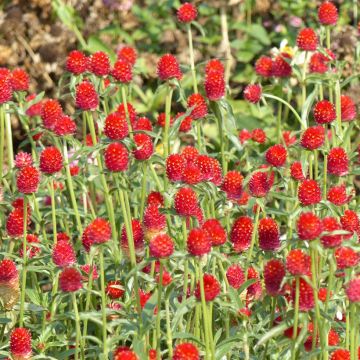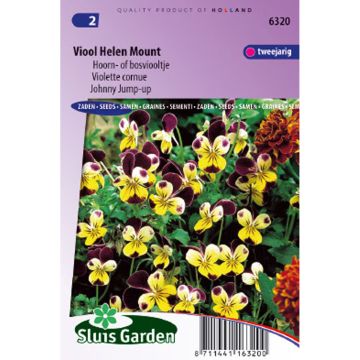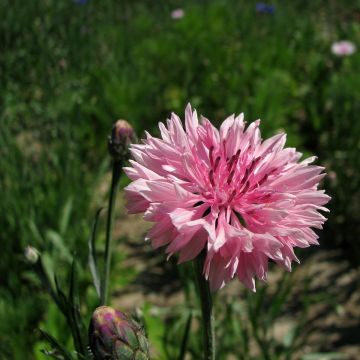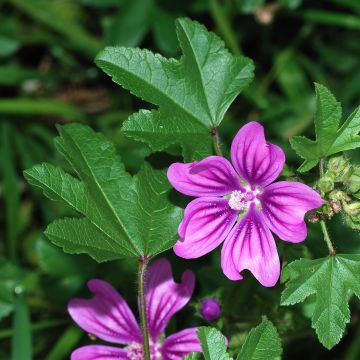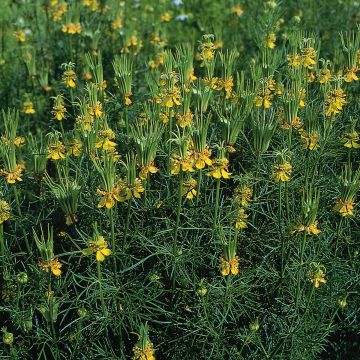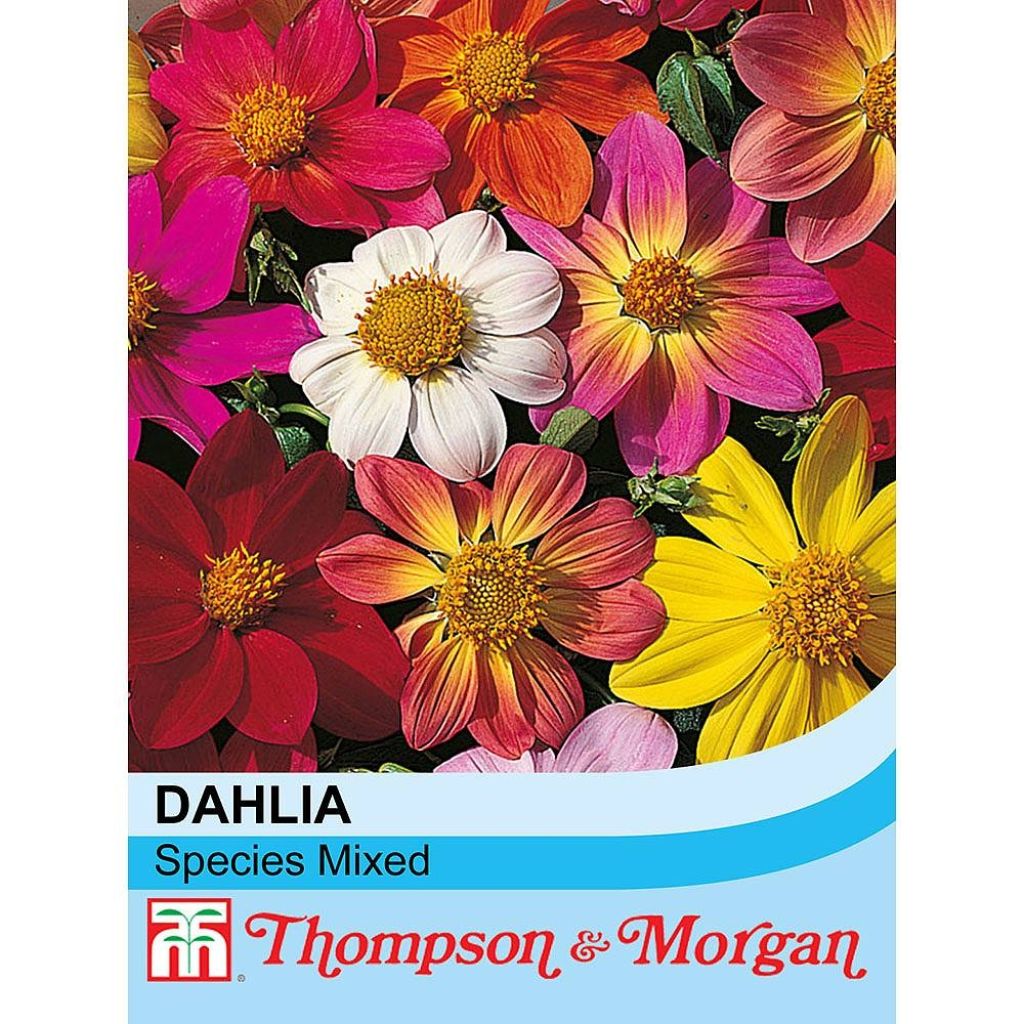

Dahlia coccinea Species Mixed Seeds
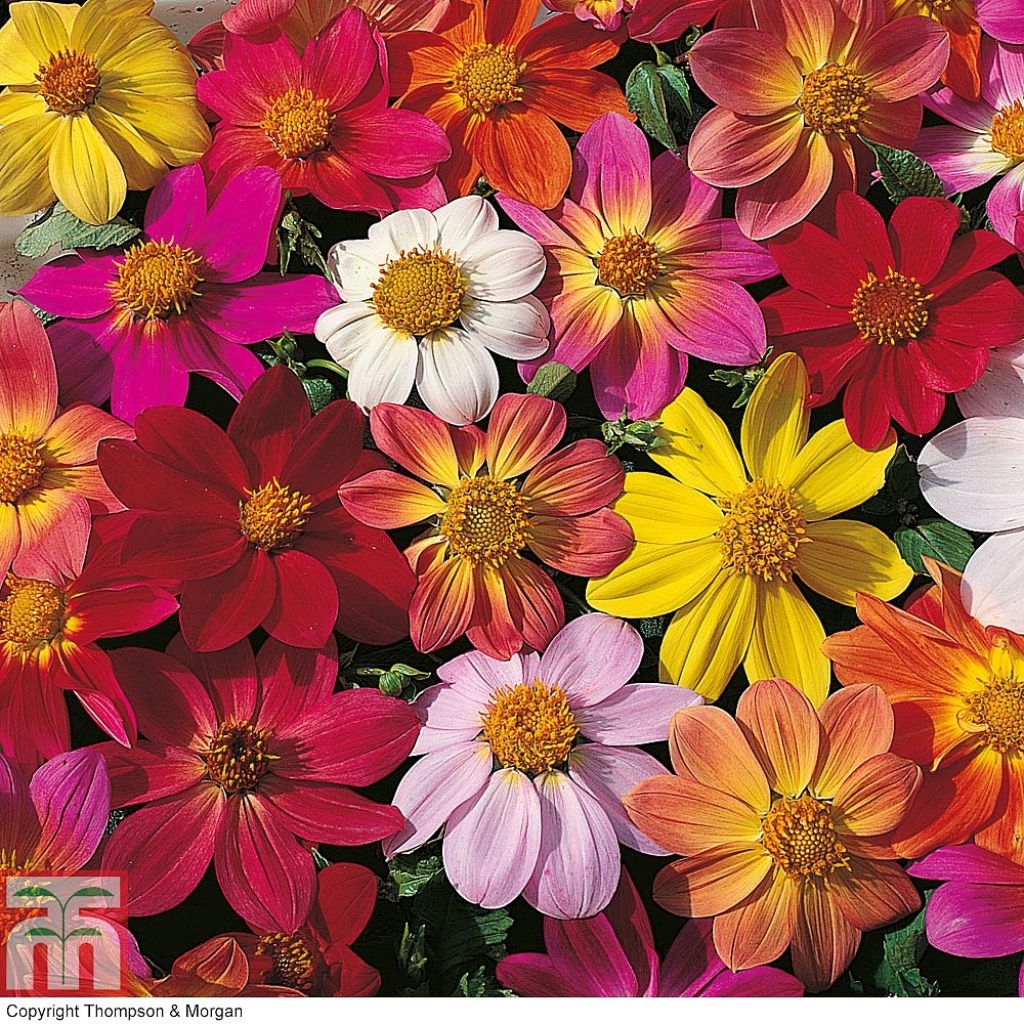

Dahlia coccinea Species Mixed Seeds
Dahlia coccinea Species Mixed Seeds
Dahlia coccinea Species mixed
Scarlet dahlia - Red dahlia Species Mixed.
Why not try an alternative variety in stock?
View all →This plant carries a 6 months recovery warranty
More information
We guarantee the quality of our plants for a full growing cycle, and will replace at our expense any plant that fails to recover under normal climatic and planting conditions.
Seed-only orders are dispatched by sealed envelope. The delivery charge for seed-only orders is €3.90.
Does this plant fit my garden?
Set up your Plantfit profile →
Description
The simple-flowered dahlias of the 'Dahlia coccinea Species Mixed' selection are stately plants that offer many surprises. Derived from a robust botanical species, the dahlias in this mix bear simple, frill-free flowers that display a broad range of colours. They are either solid or bicoloured and come in pastel hues or more flamboyant ones. The plants flower in the first year from seed, from July to frost, and are capable of surviving short frosts around -7 °C as long as they are protected by a thick mulch and are planted in well-drained soil. They are ideal for adding height to flowerbeds or for filling gaps in perennial borders. Of course, the flowers are absolutely gorgeous in vases.
Dahlias belong to the family Asteraceae and originally came from the Mexican highlands. Dahlia coccinea, also called scarlet dahlia or red dahlia, is native to Mexico and Guatemala. In its native lands, it is found in mountain forests, even at high altitudes. Hybridized with other species such as Dahlia x pinnata, it has produced most of the beautiful hybrids we grow in our gardens. With the renewed interest of gardeners in botanical species that are easier to propagate by sowing, it is possible to find seeds of "wilder" dahlia such as the 'Species Mixed', selected by the English seed company Thompson & Morgan.
Dahlia 'Species Mixed' produce flower stems reaching an average height of 1.25 m and a maximum height of 1.50 m. The plants form bushy mounds that may require staking. They flower from July to October. The capitula, which we call ‘flowers’ present beautiful, simple corollas consisting of a row of open ligulate flowers that come in a broad range of colours; soft or bright hues, in white, purple, orange, gold, pale pink, salmon pink, fuchsia, bright pink or salmon pink with a yellow and garnet red base, or in a richly nuanced gradient of solid or bicolour tones. The central disc is yellow. The stalks are hollow and the leaves are opposite and are subdivided into 3 or 5, highly denticulate lobes. The leaves and stems are of a fairly dark green.
To encourage repeat-flowering and extend the flowering period, take care to remove faded flowers. Better still, cut them regularly to create attractive, colourful bouquets where you can combine them with other varieties.
Dahlias of the 'Species Mixed' selection will form colourful spots on the front of the beds, together with Echinacea, Helenium and Cosmos for example. They go well with the bright flowers of pot marigolds, but also contrast beautifully with the blue spikes of perennial sages. You can also combine them with foxtail barley or Pennisetum villosum, a pretty, feathery grass, that lend a soft, dainty touch to the decor.
A favorite for borders and monastic-type gardens, Dahlias easily combine with the most beautiful flowers as well as the most humble ones in the vegetable garden. They can be used to create beautiful container displays or charming bouquets. In Mexico, this tuberous plant was first grown as a root vegetable for human consumption. But its mediocre taste led to it becoming more popular as an ornamental plant. Since then, interest in its beautiful exuberance has never faded.
Report an error about the product description
Flowering
Foliage
Plant habit
Botanical data
Dahlia
coccinea
Species mixed
Asteraceae
Scarlet dahlia - Red dahlia Species Mixed.
South America
Other Dahlia seeds
Planting and care
Plant them in full sun after the last frosts, in rich, moist, well-drained soil. Waterlogged soils on the other hand, contribute to the tubers rotting. Do not hesitate to improve the soils with garden compost and sand if needed. Till the soil deeply and enrich it with horn meal or dried blood. After planting, water abundantly then water regularly the following 6 weeks to help root establishment.
Since most dahlias are very sensitive to the cold, they have to be overwintered. In November, when the first frosts blacken the foliage it is time to lift them. Dig up the tubers carefully. Clean off as much as earth as possible. Let the foliage dry so that the tubers can replenish their reserves. Then cut the stems to a height of 10 cm. Spread your tubers out in a crate on newsprint. Place them in a cool, dry, dark, frost-free location such as a frost-free garage for example or an attic.
In our most southernmost regions near the sea, there is such little risk of frost that it is possible to leave the Dahlia 'Species Mixed' in open ground. Their tubers resist short frosts around -7 °C. Simply take care to cover the ground with a thick leaf mulch or straw mulch to provide some protection from the cold.
Sowing period
Intended location
This item has not been reviewed yet - be the first to leave a review about it.
Flower seeds
Haven't found what you were looking for?
Hardiness is the lowest winter temperature a plant can endure without suffering serious damage or even dying. However, hardiness is affected by location (a sheltered area, such as a patio), protection (winter cover) and soil type (hardiness is improved by well-drained soil).

Photo Sharing Terms & Conditions
In order to encourage gardeners to interact and share their experiences, Promesse de fleurs offers various media enabling content to be uploaded onto its Site - in particular via the ‘Photo sharing’ module.
The User agrees to refrain from:
- Posting any content that is illegal, prejudicial, insulting, racist, inciteful to hatred, revisionist, contrary to public decency, that infringes on privacy or on the privacy rights of third parties, in particular the publicity rights of persons and goods, intellectual property rights, or the right to privacy.
- Submitting content on behalf of a third party;
- Impersonate the identity of a third party and/or publish any personal information about a third party;
In general, the User undertakes to refrain from any unethical behaviour.
All Content (in particular text, comments, files, images, photos, videos, creative works, etc.), which may be subject to property or intellectual property rights, image or other private rights, shall remain the property of the User, subject to the limited rights granted by the terms of the licence granted by Promesse de fleurs as stated below. Users are at liberty to publish or not to publish such Content on the Site, notably via the ‘Photo Sharing’ facility, and accept that this Content shall be made public and freely accessible, notably on the Internet.
Users further acknowledge, undertake to have ,and guarantee that they hold all necessary rights and permissions to publish such material on the Site, in particular with regard to the legislation in force pertaining to any privacy, property, intellectual property, image, or contractual rights, or rights of any other nature. By publishing such Content on the Site, Users acknowledge accepting full liability as publishers of the Content within the meaning of the law, and grant Promesse de fleurs, free of charge, an inclusive, worldwide licence for the said Content for the entire duration of its publication, including all reproduction, representation, up/downloading, displaying, performing, transmission, and storage rights.
Users also grant permission for their name to be linked to the Content and accept that this link may not always be made available.
By engaging in posting material, Users consent to their Content becoming automatically accessible on the Internet, in particular on other sites and/or blogs and/or web pages of the Promesse de fleurs site, including in particular social pages and the Promesse de fleurs catalogue.
Users may secure the removal of entrusted content free of charge by issuing a simple request via our contact form.
The flowering period indicated on our website applies to countries and regions located in USDA zone 8 (France, the United Kingdom, Ireland, the Netherlands, etc.)
It will vary according to where you live:
- In zones 9 to 10 (Italy, Spain, Greece, etc.), flowering will occur about 2 to 4 weeks earlier.
- In zones 6 to 7 (Germany, Poland, Slovenia, and lower mountainous regions), flowering will be delayed by 2 to 3 weeks.
- In zone 5 (Central Europe, Scandinavia), blooming will be delayed by 3 to 5 weeks.
In temperate climates, pruning of spring-flowering shrubs (forsythia, spireas, etc.) should be done just after flowering.
Pruning of summer-flowering shrubs (Indian Lilac, Perovskia, etc.) can be done in winter or spring.
In cold regions as well as with frost-sensitive plants, avoid pruning too early when severe frosts may still occur.
The planting period indicated on our website applies to countries and regions located in USDA zone 8 (France, United Kingdom, Ireland, Netherlands).
It will vary according to where you live:
- In Mediterranean zones (Marseille, Madrid, Milan, etc.), autumn and winter are the best planting periods.
- In continental zones (Strasbourg, Munich, Vienna, etc.), delay planting by 2 to 3 weeks in spring and bring it forward by 2 to 4 weeks in autumn.
- In mountainous regions (the Alps, Pyrenees, Carpathians, etc.), it is best to plant in late spring (May-June) or late summer (August-September).
The harvesting period indicated on our website applies to countries and regions in USDA zone 8 (France, England, Ireland, the Netherlands).
In colder areas (Scandinavia, Poland, Austria...) fruit and vegetable harvests are likely to be delayed by 3-4 weeks.
In warmer areas (Italy, Spain, Greece, etc.), harvesting will probably take place earlier, depending on weather conditions.
The sowing periods indicated on our website apply to countries and regions within USDA Zone 8 (France, UK, Ireland, Netherlands).
In colder areas (Scandinavia, Poland, Austria...), delay any outdoor sowing by 3-4 weeks, or sow under glass.
In warmer climes (Italy, Spain, Greece, etc.), bring outdoor sowing forward by a few weeks.


































